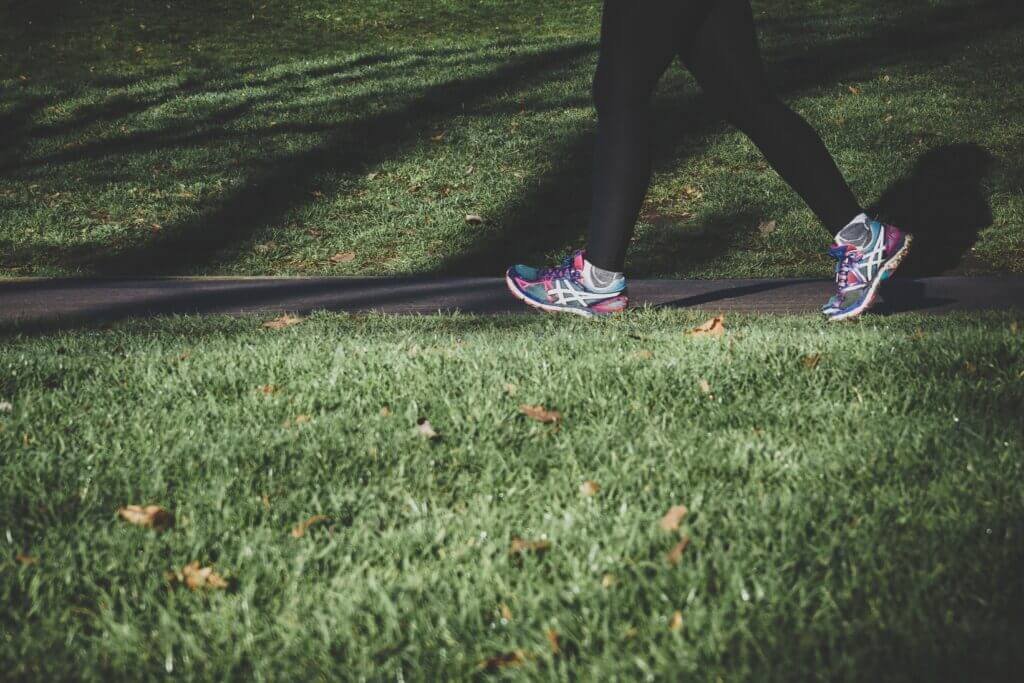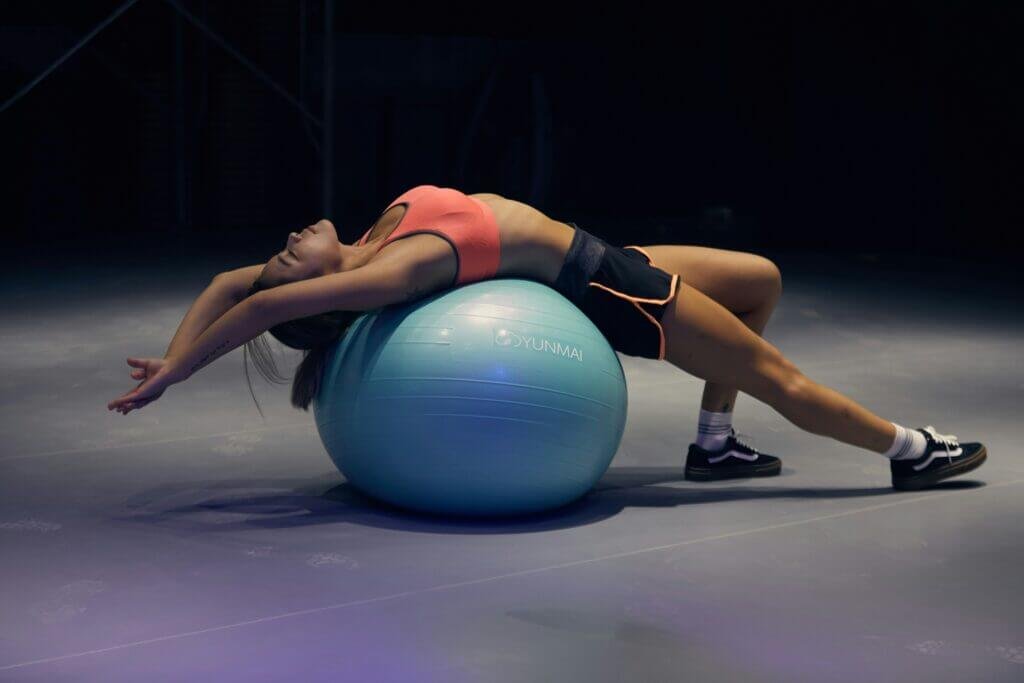Whether you’re hitting the gym for the first time in years or looking to maintain a strong and healthy back well into your golden years, this article is here to guide you through an effective back workout for those over 50. As we age, it becomes increasingly important to prioritize our back muscles, as they play a crucial role in supporting our spine and maintaining good posture. So, grab a towel, put on your favorite workout playlist, and get ready to strengthen and stretch those back muscles with this specially curated routine designed with your needs in mind.

Benefits of Back Workouts for Individuals over 50
As you age, it becomes increasingly important to prioritize your health and fitness. Engaging in regular back workouts can provide numerous benefits for individuals over 50. Here are some of the key advantages:
Improved Posture and Balance
Back workouts can greatly contribute to improved posture and balance, which tend to decline with age. Strengthening the muscles in your back can help you maintain an upright posture, reducing the risk of developing a hunched back or rounded shoulders. Additionally, a strong back can enhance your balance, making you less prone to falls and injuries.
Reduced Lower Back Pain
Lower back pain is a common complaint among individuals over 50. However, incorporating back workouts into your fitness routine can help alleviate and prevent this discomfort. Strengthening the muscles in your back, particularly the core and erector spinae muscles, can provide stability and support to your spine, reducing the strain on your lower back and easing any existing pain.
Increased Strength and Mobility
Maintaining strength and mobility is crucial as you age, and back workouts can play a significant role in achieving this. A strong back can improve your ability to perform daily activities such as lifting, carrying, and reaching. By engaging in exercises that target the back muscles, you can increase your overall strength and enhance your range of motion, allowing you to move more freely and confidently.
Enhanced Overall Fitness Level
Back workouts not only focus on the back muscles but also engage various other muscle groups in your body. This comprehensive approach to fitness can contribute to an overall improvement in your fitness level. As you engage in back exercises, you will notice increased stamina, improved cardiovascular health, and heightened endurance. This will not only benefit your back but also positively impact your overall well-being.
Factors to Consider Before Starting a Back Workout Routine
Before starting any new workout routine, it is important to consider a few key factors. Taking these considerations into account can help ensure your safety and maximize the effectiveness of your workouts. Here are some important factors to keep in mind:
Consulting with a Healthcare Professional
If you have any pre-existing medical conditions or concerns, it is advisable to consult with a healthcare professional before beginning a back workout routine. They can assess your current health status and provide personalized recommendations, taking into account any specific limitations you may have.
Understanding Individual Fitness Goals
Before embarking on a back workout routine, it is essential to identify your individual fitness goals. Whether you aim to improve strength, reduce pain, or enhance overall fitness, having a clear understanding of your objectives will allow you to tailor your workouts accordingly.
Assessing Current Level of Fitness
Assessing your current level of fitness is imperative to ensure that you start at an appropriate intensity level. It is essential to be honest with yourself about your abilities and limitations. This will help you select suitable exercises and safely progress over time.
Modify Exercises to Accommodate Existing Injuries or Conditions
If you have any existing injuries or chronic conditions, it is essential to modify exercises accordingly. By making appropriate adjustments or seeking guidance from a fitness professional, you can safely engage in back workouts without exacerbating any pre-existing issues.
Recommended Warm-up Exercises
Before diving into your back workout routine, it is crucial to warm up your muscles and prepare your body for the workout ahead. Here are some recommended warm-up exercises:
Arm Circles
Stand with your feet shoulder-width apart and extend your arms out to the sides. Make small circles with your arms, gradually increasing the size of the circles. Repeat this exercise for about 30 seconds, then switch directions.
Shoulder Rolls
Stand straight with your feet hip-width apart. Roll your shoulders forward, then upward, then backward in a smooth and controlled motion. Repeat this exercise for about 10-12 repetitions.
Cat-Cow Stretch
Start on all fours with your hands directly under your shoulders and knees under your hips. Arch your back up towards the ceiling, tucking your chin to your chest (cat pose). Then, let your belly drop and lift your chest and tailbone towards the ceiling (cow pose). Repeat this stretch for 10-12 repetitions.
Trunk Rotations
Stand with your feet shoulder-width apart and place your hands on your hips. Rotate your upper body to the right, keeping your feet planted on the ground. Return to the center, then repeat the rotation to the left. Perform 10-12 repetitions on each side.
By performing these warm-up exercises, you will increase blood flow to your muscles, loosen up your joints, and prepare your body for the upcoming back workout.
Effective Back Exercises for Individuals over 50
Now that you are properly warmed up, it’s time to explore some effective back exercises specifically designed for individuals over 50. These exercises target various muscles in your back, promote strength and flexibility, and contribute to improved overall fitness. Here are ten back exercises to incorporate into your routine:
1. Lat Pulldowns
Lat pulldowns primarily engage the latissimus dorsi muscles, which are important for strong and defined upper back muscles. To perform this exercise, sit at a lat pulldown machine, grasp the bar with an overhand grip, and pull it down towards your chest while keeping your back straight. Aim for 3 sets of 10-12 repetitions.
2. Seated Cable Rows
Seated cable rows target the middle and lower back muscles, helping to enhance overall back strength. Sit on a rowing machine with your legs extended and grasp the handles. Keeping your back straight, pull the handles towards your midsection, squeezing your shoulder blades together. Perform 3 sets of 10-12 repetitions.
3. Bent-Over Rows
Bent-over rows are excellent for strengthening the muscles in your upper back and improving posture. To perform this exercise, stand with your feet shoulder-width apart and hold a pair of dumbbells. Bend forward at the hips, keeping your back flat, and pull the dumbbells towards your chest while engaging your back muscles. Aim for 3 sets of 10-12 repetitions.
4. Superman Pose
The Superman pose targets the muscles in your lower back while improving the stability of your entire core. Lie face down on a mat with your arms extended in front of you. Simultaneously lift your arms, legs, and upper chest off the ground, engaging your back muscles. Hold this position for 15-20 seconds, then relax and repeat for 2 sets.
5. Back Extension
Back extensions work the erector spinae muscles, which are essential for maintaining a healthy back. Lie face down on a back extension bench with your thighs and hips secured. Slowly lift your upper body off the bench until you feel a contraction in your lower back. Lower back down and repeat for 2 sets of 10-12 repetitions.
6. Wall Slides
Wall slides are a gentle exercise that targets the muscles in your upper back and shoulders. Stand with your back against a wall and slide your arms up the wall as high as you can without pain. Slowly lower your arms back down and repeat for 2 sets of 10-12 repetitions.
7. Bridge Pose
Bridge pose is a yoga exercise that strengthens the entire back while also engaging the glutes and hamstrings. Lie on your back with your knees bent and feet flat on the ground. Pressing through your heels, lift your hips off the ground, creating a straight line from your knees to your shoulders. Hold this position for 15-20 seconds, then lower back down. Repeat for 2 sets.
8. Deadlifts
Deadlifts are a compound exercise that engages multiple muscle groups, including the back, glutes, and hamstrings. Start with your feet hip-width apart and hold a barbell or dumbbells in front of you. Hinge at the hips, keeping your back straight, and lower the weight towards the ground. Engage your back and lift the weight back up, extending your hip joint. Aim for 3 sets of 10-12 repetitions.
9. Dumbbell Shrugs
Dumbbell shrugs target the trapezius muscles, which are important for neck and shoulder stability. Stand with your feet shoulder-width apart and hold a pair of dumbbells by your sides. Shrug your shoulders up towards your ears, then lower them back down. Perform 2 sets of 10-12 repetitions.
10. Prone Cobra
Prone cobra is another yoga-inspired exercise that stretches the muscles in your lower back while also engaging your glutes and hamstrings. Lie face down with your arms extended overhead and your legs straight. Lift your chest and legs off the ground while simultaneously squeezing your shoulder blades together. Hold this position for 15-20 seconds, then relax and repeat for 2 sets.
By incorporating these effective back exercises into your routine, you can target and strengthen different areas of your back, promoting overall back health and fitness.

Tips for Performing Back Workouts Safely
While performing back workouts, it is essential to prioritize safety to prevent injuries and maximize the effectiveness of your exercises. Here are some helpful tips for performing back workouts safely:
Maintaining Proper Form and Technique
Maintaining proper form and technique is crucial to ensure that you are effectively targeting the intended muscles and minimizing the risk of injury. Prior to starting your back workouts, take the time to learn the correct form for each exercise. Focus on engaging the targeted muscles and perform the exercises in a controlled and intentional manner.
Start with Lighter Weights and Gradually Increase
When starting a new back workout routine, it is important to listen to your body and start with lighter weights. Gradually increase the weight or resistance as your strength and endurance improve. This progressive approach will allow your muscles to adapt and reduce the risk of straining or overexertion.
Avoid Straining or Overexertion
Pushing yourself to the limit may seem like a good idea, but it is important to recognize your limits and avoid straining or overexerting yourself during back workouts. Listen to your body’s signals and take breaks when necessary. It is better to prioritize safety and gradually build up intensity over time rather than risking injuries or setbacks.
Listen to Your Body and Take Rest When Needed
Rest and recovery are crucial components of any exercise routine, including back workouts. Pay attention to your body’s signals, especially if you experience any pain or discomfort during or after your workouts. If needed, take a rest day or focus on lighter activities to allow your body to recover and prevent overuse injuries.
Using Proper Breathing Techniques
Proper breathing techniques can significantly enhance the effectiveness and safety of your back workouts. While performing each exercise, inhale during the relaxation phase and exhale during the exertion phase. This rhythmic breathing pattern helps maintain stability and control throughout the movements.
Avoiding High-Impact Exercises
High-impact exercises, such as jumping or running, may put excessive strain on your back, especially if you have pre-existing conditions or injuries. It is advisable to avoid or modify high-impact exercises to reduce the risk of exacerbating back pain or causing new injuries. Instead, focus on low-impact exercises that prioritize strength, stability, and flexibility.
By following these tips, you can ensure that your back workouts are safe, efficient, and enjoyable, helping you achieve your fitness goals while minimizing the risk of injuries.
Sample Back Workout Routine for Individuals over 50
To give you an example of how a back workout routine for individuals over 50 might look, here is a sample routine that incorporates a variety of exercises:
Warm-up exercises (5-7 minutes)
- Arm circles: 30 seconds
- Shoulder rolls: 10-12 repetitions
- Cat-cow stretch: 10-12 repetitions
- Trunk rotations: 10-12 repetitions each side
Lat Pulldowns – 3 sets of 10-12 repetitions
- Use a lat pulldown machine and choose a weight that challenges you while maintaining proper form. Rest for 60 seconds between sets.
Seated Cable Rows – 3 sets of 10-12 repetitions
- Sit at a cable row machine with your legs extended and select an appropriate weight. Focus on pulling the handles towards your midsection, squeezing your shoulder blades together. Take 60 seconds of rest between sets.
Bent-Over Rows – 3 sets of 10-12 repetitions
- Stand with your feet shoulder-width apart, hold a pair of dumbbells, and hinge forward at the hips while keeping your back flat. Pull the dumbbells towards your chest, engaging your back muscles. Rest for 60 seconds between sets.
Superman Pose – 2 sets of 15-20 seconds holds
- Lie face down on a mat and simultaneously lift your arms, legs, and upper chest off the ground, engaging your back muscles. Hold this position for 15-20 seconds, then relax and repeat. Rest for 30-60 seconds between sets.
Back Extension – 2 sets of 10-12 repetitions
- Lie face down on a back extension bench and perform back extensions by lifting your upper body off the bench. Lower back down and repeat. Rest for 60 seconds between sets.
Wall Slides – 2 sets of 10-12 repetitions
- Stand with your back against a wall and slide your arms up the wall as high as you can without pain. Slowly lower your arms back down and repeat. Rest for 30-60 seconds between sets.
Bridge Pose – 2 sets of 15-20 seconds holds
- Lie on your back with your knees bent and feet flat on the ground. Lift your hips off the ground, creating a straight line from your knees to your shoulders. Hold this position for 15-20 seconds, then lower back down. Rest for 30-60 seconds between sets.
Deadlifts – 3 sets of 10-12 repetitions
- Start with your feet hip-width apart and hold a barbell or dumbbells in front of you. Hinge at the hips, keeping your back straight, and lower the weight towards the ground. Engage your back and lift the weight back up. Rest for 60 seconds between sets.
Dumbbell Shrugs – 2 sets of 10-12 repetitions
- Stand with your feet shoulder-width apart and hold a pair of dumbbells by your sides. Shrug your shoulders up towards your ears, then lower them back down. Rest for 30-60 seconds between sets.
Prone Cobra – 2 sets of 15-20 seconds holds
- Lie face down with your arms extended overhead and your legs straight. Lift your chest and legs off the ground while squeezing your shoulder blades together. Hold this position for 15-20 seconds, then relax and repeat. Rest for 30-60 seconds between sets.
Cool-down and stretches (5-7 minutes)
- Perform gentle stretching exercises for your back, such as child’s pose, seated forward bend, cat-camel stretch, and supine twist. Hold each stretch for 15-30 seconds and focus on relaxing your muscles.
By following this sample back workout routine, you can target different muscles in your back, promote strength and flexibility, and achieve a well-rounded and effective workout.

Stretching and Flexibility Exercises for the Back
Stretching and flexibility exercises are important components of any fitness routine, especially for the back. Here are a few stretches that can help improve flexibility and release tension in your back:
Child’s Pose
Start on all fours with your knees shoulder-width apart and your toes touching. Sit back onto your heels while maintaining an extended reach with your arms. Lower your forehead towards the floor and gently stretch your back by reaching your arms forward. Hold this pose for 20-30 seconds while focusing on deep breathing.
Seated Forward Bend
Sit on the edge of a mat with your legs extended in front of you. Reach your hands towards your feet and slowly fold forward from your hips, keeping your back straight. Relax into the stretch and hold for 20-30 seconds. Feel the gentle stretch in your lower back and hamstring muscles.
Cat-Camel Stretch
Start on all fours with your hands directly under your shoulders and your knees under your hips. Inhale while dropping your belly towards the floor, arching your back and lifting your tailbone. Exhale while rounding your spine towards the ceiling, tucking your chin to your chest. Repeat this cat-camel flow for 10-12 repetitions, focusing on the gentle stretch and mobility of your entire spine.
Supine Twist
Lie on your back with your arms extended out to the sides and your knees bent. Slowly lower both knees to one side while keeping your shoulders flat on the ground. Hold the stretch for 20-30 seconds, then return to the starting position and repeat on the other side. This stretch promotes spinal mobility and releases tension in your back.
Incorporating these stretching exercises into your routine will help enhance flexibility, reduce muscle tightness, and promote relaxation in your back and surrounding muscles.
Importance of Rest and Recovery
While it is crucial to engage in regular back workouts, it is equally important to prioritize rest and recovery to optimize the benefits of your training. Here are a few reasons why rest and recovery are essential:
Allowing Sufficient Rest between Workout Sessions
Rest days between back workouts are essential for your muscles to recover and rebuild. It is during rest that your muscles repair themselves and adapt to the stresses of exercise, resulting in increased strength and resilience. Aim to have at least one or two days of rest between intense back workouts.
Focusing on Quality Sleep and Nutrition
Quality sleep plays a vital role in overall recovery and muscle repair. Adequate sleep allows your body to produce growth hormone, crucial for muscle building and repair. Additionally, nutrition plays a key role in supporting muscle recovery. Ensure you consume a balanced diet that includes sufficient protein, vitamins, and minerals to support your back workouts and recovery process.
Incorporating Proper Post-workout Stretches
Stretching after your back workouts can enhance recovery by increasing blood flow to your muscles, reducing muscle soreness, and improving flexibility. Including a cool-down period that incorporates gentle stretching exercises targeting your back and surrounding muscles can help prevent stiffness and promote a quicker recovery.
By prioritizing rest and recovery, you can optimize the benefits of your back workouts, minimize the risk of overuse injuries, and ensure a more sustainable and enjoyable fitness journey.

Conclusion
Back workouts can bring numerous benefits for individuals over 50. From improved posture and balance to reduced lower back pain and increased strength, engaging in back exercises can have a profound impact on your overall well-being. However, it is important to consider individual factors such as consulting with a healthcare professional, understanding fitness goals, and assessing current fitness levels before starting a back workout routine. Incorporating warm-up exercises, effective back exercises, and proper safety precautions can help you achieve optimal results while minimizing the risk of injury. Remember the importance of rest and recovery, as well as incorporating stretching and flexibility exercises into your routine. With proper guidance, form, and a tailored approach, back workouts can be a rewarding and enjoyable part of your fitness journey as an individual over 50.


